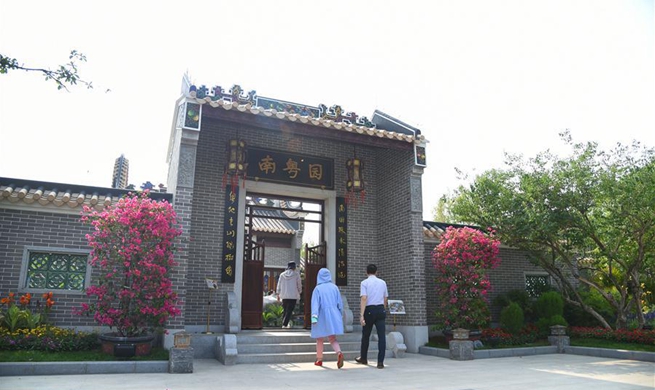BEIJING, July 13 (Xinhua) -- The following are highlights of China's key archaeological news from the past week:
-- Qing Dynasty stone tablet
A stone tablet dating back to the Qing Dynasty (1644-1911) has been discovered in north China's Hebei Province.
The tablet is estimated to have a history of 275 years. Found in a river course in Neiqiu County, the tablet is 170 cm tall, 61.5 cm wide and 18 cm thick.
The inscriptions on the back of the tablet describe the construction of a local Taoist temple. Experts said the tablet provides important materials for the study of Taoist culture in Hebei's central and southern parts during the Qing Dynasty.
-- Ancient murals
An ancient tomb with delicate murals was discovered in east China's Shandong Province.
Located in Jinan's Changqing District, the brick-chambered tomb was believed to date back to the Yuan Dynasty (1271-1368).
The underground part of the tomb is a Mongolian yurt-like rotunda. Its dome was carved with relief in the shape of a lotus flower. The walls were painted with cloud-like patterns believed to bring good luck in Chinese culture. The date of the tomb was also written on the wall.
-- Over 400-yr-old stone tablet
A stone tablet dating back to the Ming Dynasty (1384-1644) has been discovered in north China's Hebei Province.
Found in the process of land leveling near Puli Pagoda in Lincheng County, the tablet is believed to have been made during the reign of Emperor Wanli, and has a history of 406 years, according to the county's cultural heritage administration.
The cuboid is 227 cm tall, 90 cm wide and 30 cm thick, with inscriptions of 748 characters describing a Puli monk proposing to give porridge to the needy.
-- Over 1,200-yr-old stone tablet
A stone tablet dating back to the Tang Dynasty (618-907) has been discovered in north China's Hebei Province.
Found in Songtai Village in Nanhe County, the tablet, which is believed to have been made during the reign of Emperor Dezong, has a history of 1,225 years.
The body of the cuboid is 216 cm tall, 80 cm wide and 22 cm thick, with a well-preserved pedestal decorated with exquisite carvings on all four sides.
The tablet has an inscription of more than 1,300 characters describing administrative division back then as well as the story of Song Jing, a chancellor of the Tang Dynasty, whose hometown is in Songtai Village.

















